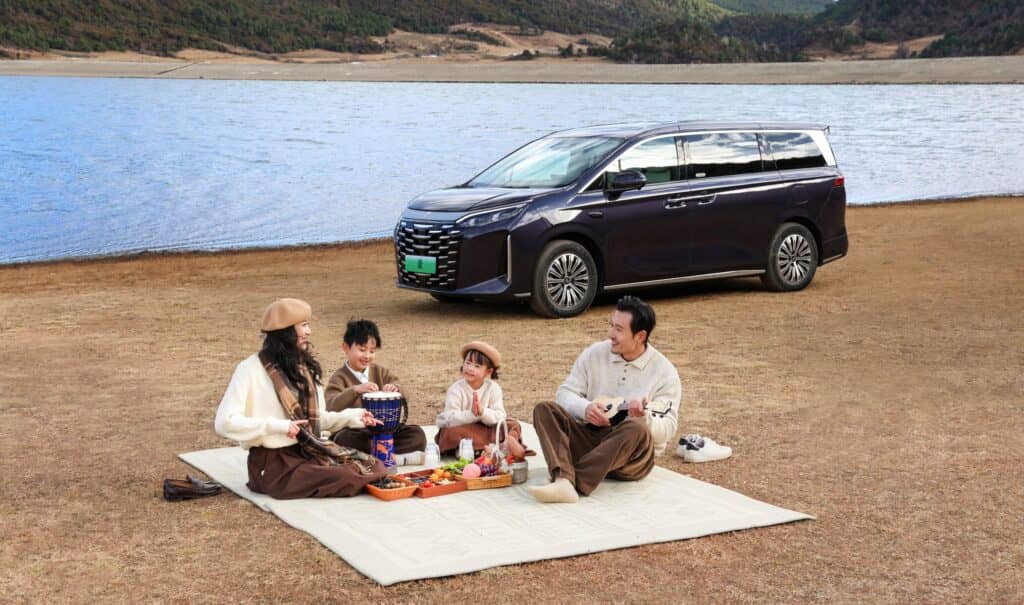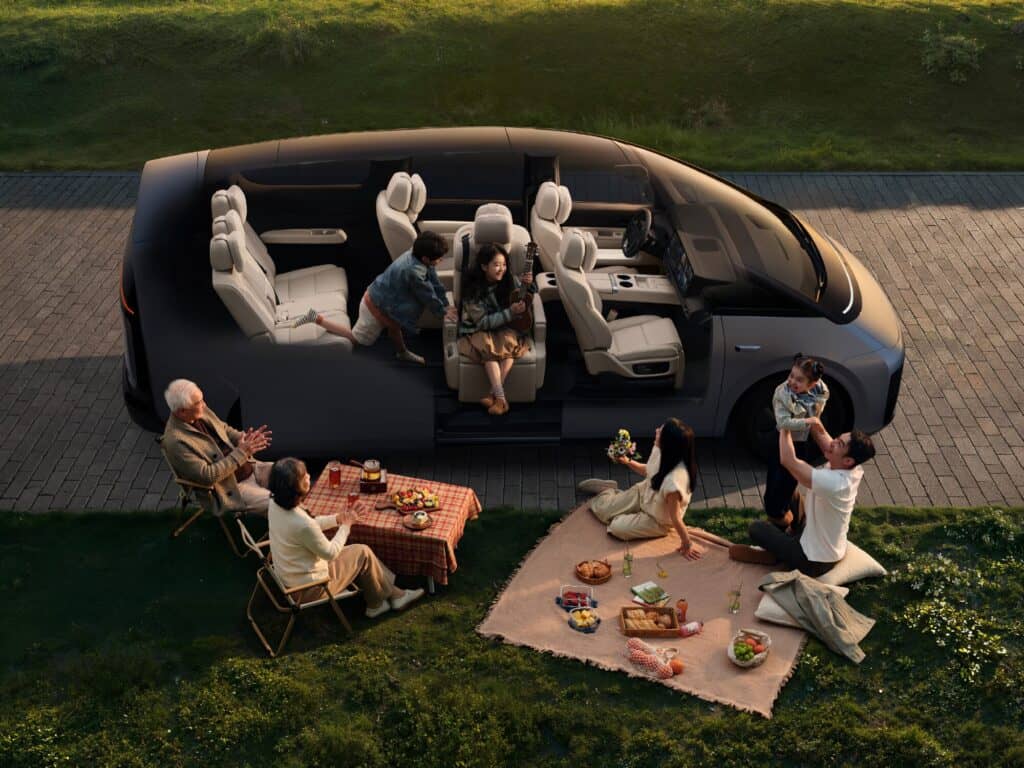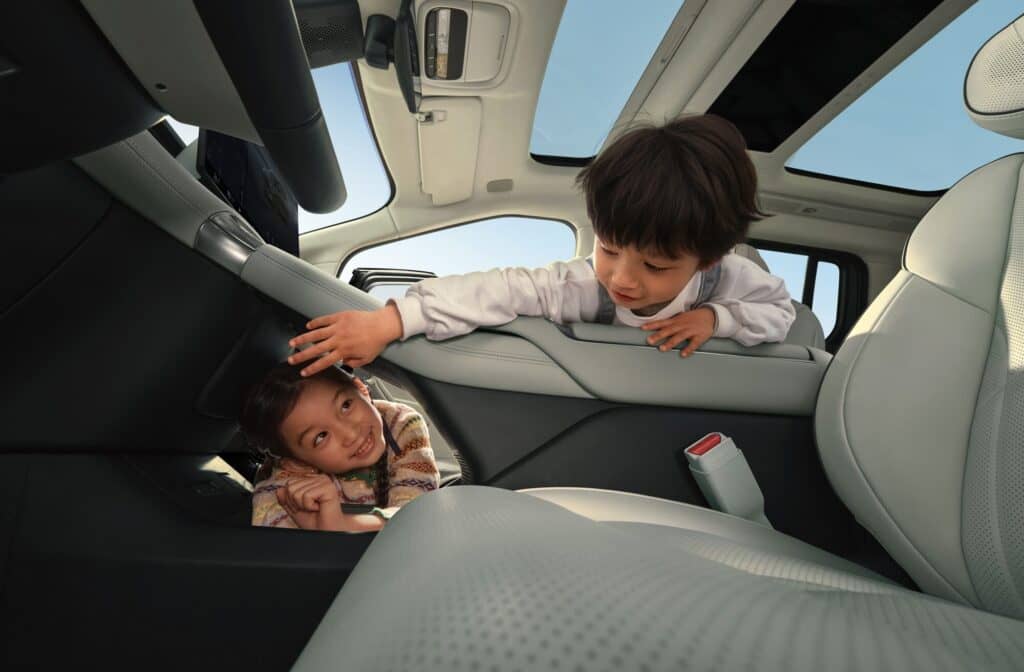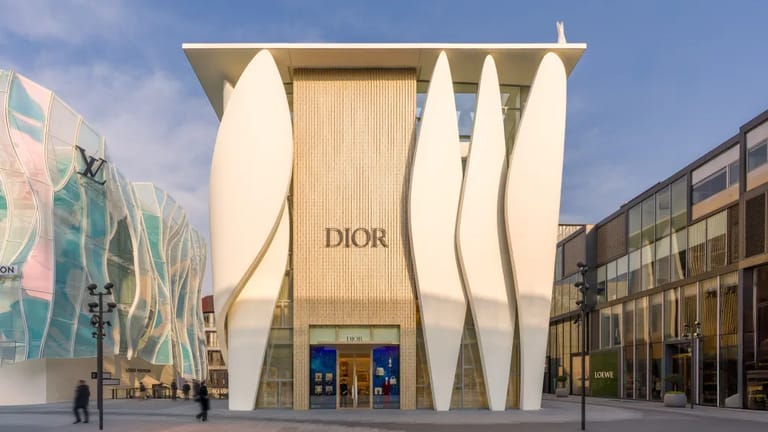Inside China’s Lifestyle-Led MPV Revolution
By
Huiyan Chen

Published on
June 3, 2025

Jingzhi Vibe is a deep dive into the ever-evolving world of jingzhi(精致)—China’s unique expression of refinement, aesthetics, and cultural sophistication. This column unpacks the latest trends, movements, and lifestyle shifts shaping contemporary consumer desires, spanning luxury, fashion, design, wellness, and beyond. With a sharp local lens, Jingzhi Vibe deciphers how brands, creatives, and tastemakers are redefining modern Chinese elegance—and what it means for those looking to navigate this dynamic market.
Long regarded as the go-to vehicle for business fleets and executive transport, the MPV—or multi-purpose vehicle—is quietly entering a new phase in China: the domestic family car. According to data compiled by Zheshang Securities Research Institute, MPV sales in China reached 1.09 million units in 2024, up nearly 16 percent from 2022. This marks not only a decisive end to five consecutive years of sales decline but also the beginning of a new growth cycle for the segment.
This momentum was on full display at the recently concluded Auto Shanghai 2025. From legacy brands like Mercedes-Benz and Buick to emerging players such as BYD, Li Auto, and XPeng, automakers unveiled new MPV models that reflected a broader industry pivot toward intelligent, luxurious, and multi-functional driving experiences. What was once a purely utilitarian category is now at the heart of China’s evolving auto consumer culture.
The Rebirth of a Category
Traditionally positioned for government fleets and corporate transport, MPVs have long been prized for their dual capacity to carry both passengers and cargo. But today, two parallel shifts—China’s evolving family structure and rising consumer expectations—are redefining the segment. The increase in multi-child households, combined with the popularity of road trips and light camping, has transformed MPVs into ideal companions for family-centric lifestyles.
At the core of this resurgence is a growing structural demand for space. China’s two- and three-child policies have brought more complex needs to family travel—from accommodating car seats and grandparents to ensuring comfortable long-haul seating. MPVs offer flexibility and ease of access that sedans and SUVs often struggle to match.
“Beyond the industry-wide shift from fuel to electric, the biggest change in the MPV space is the shift from business to family use,” said automotive content creator Kong Xiangfei in an interview with Jingzhi Chronicle. “Whether it’s school drop-offs, transporting elderly relatives, or elevating middle-class travel quality, MPVs are becoming central to daily life.”
A consumer study from consultancy Jielanlu backs this up: 76.9 percent of new energy MPV owners are married with children, and the average owner is just over 36 years old. When asked why they purchased an MPV, 61 percent cited everyday leisure, while 56 percent said it was for transporting their children.
Yet one use case stood out: short-distance road trips, cited by 63 percent of respondents as the top reason for purchase. This points to a broader lifestyle shift. According to the 2025 Youth Travel Trend Report by Yicai’s DT Business Observer, 36 percent of respondents prefer local getaways, rising to 43.4 percent among those born in the mid-1980s. With adjustable seating, expansive trunks, and ample cabin space, MPVs cater perfectly to this growing travel demand.
“Our main reason for buying an MPV was to take the kids on weekend trips,” said Larry Chen, who purchased a Li Auto MPV last year. “We just took both of our children on a self-drive trip to Anji over the May Day holiday.”
Social media has amplified this appeal. A wave of lifestyle influencers are now posting MPV-to-campervan conversions—part fantasy, part how-to guide. “I was first drawn to Li Auto after seeing dad-friendly car mods on Xiaohongshu,” Larry shared, though he admitted, “In reality, we’ve only bought a canopy for camping—it’s less hassle.”

The Next-Gen MPV User: Not Just Parents
Interestingly, MPVs are gaining traction beyond the traditional family demographic. Young consumers are increasingly renting MPVs for the flexibility, cargo space, and comfort they offer—particularly for outdoor activities. According to DT Business Observer’s 2025 Youth Car Rental Trend Report, camping and picnicking are the top rental scenarios for post-’90s and post-’00s users. The report also found that rear storage and cabin space were top considerations in vehicle choice—two clear MPV advantages.
As user expectations evolve, automakers are responding in kind, racing to pack MPVs with intelligent features, modular interiors, and digital experiences. This cycle of consumer demand and product innovation is feeding a virtuous loop of category reinvention.
From Transport to Third Space
As the core MPV user shifts from executive to caregiver, the expectations placed on the vehicle have also changed. It’s no longer just about fitting more people—it’s about accommodating multiple roles, moods, and scenarios. In this new landscape, MPVs are being reconceived not just as transport, but as extensions of the home.
Take the Li Auto MEGA: its swivel seats can face one another, with a floating table between them, and a pop-up dining room, card table, or play area. Weipai’s Gaoshan model goes a step further, offering a fully flat third row that doubles as a mobile bedroom—perfect for families on overnight trips.

XPeng’s new X9, unveiled at Auto Shanghai 2025, also mirrors this evolution. Folding tray tables, zero-gravity seats, rear entertainment screens, and zoned voice control—together they enable parallel use of space: parents taking Zoom calls in the front, children watching movies in the back.
“Unlike sedan buyers, MPV users are looking beyond specs—they care about in-cabin features, entertainment systems, and customization potential,” said Qing Dai, a former sales advisor at a new energy automaker.
As Dai notes, these design elements are less about performance than about lifestyle orchestration. Understanding everyday use cases—from diaper changes to dog beds—has become a key differentiator. “First-time test drivers are often surprised at just how well-equipped today’s MPVs are,” she added.
A Proposal for a Way of Life
But as automakers race to outdo each other in function, the playing field is rapidly leveling. When every model offers plush seats and panoramic sunroofs, emotional resonance becomes the next frontier.
As a “second space” for families, MPVs require longer decision cycles and higher emotional buy-in. Buyers are no longer choosing based solely on features; they’re looking for brands that reflect their values and aspirations. This explains the rise of marketing language built around parenting, pets, travel, and togetherness—an effort by automakers to make the MPV part of a larger life narrative.

This emotional framing resonates particularly well with high-net-worth individuals. According to the 2025 China High-Net-Worth Consumer Report by COE@OMG, luxury EV adoption is accelerating in this group, and so are expectations for marketing: traditional specs no longer suffice. Instead, these consumers are looking for participatory, emotionally gratifying experiences. Campaigns that center around family, outdoor adventure, and human connection are key to winning their loyalty.
“Marketing used to be about identifying needs,” said Kong. “Now it’s about creating them—using storytelling and scenario-based engagement to spark the consumer’s imagination, solve latent pain points, and make them buy with their heart.”
This emotional blueprint, long used by the luxury and beauty industries to cultivate brand loyalty through lifestyle projection, identity signaling, and immersive experiences, is now being adopted by the MPV category. As a high-stakes purchase rooted in relationship dynamics, the MPV is becoming a vessel for values, not just passengers.
Whether this momentum will hold remains to be seen. But one thing is clear: As Chinese families and lifestyles evolve, so too will their vehicles. And for the brands looking to win this race, the challenge is no longer just about building a better machine—it’s about earning a place in the everyday lives and emotional landscapes of their drivers.












